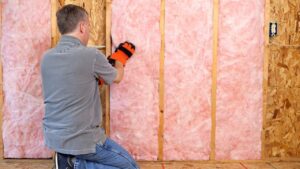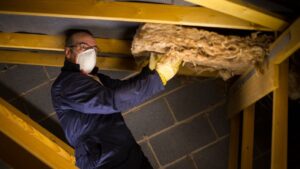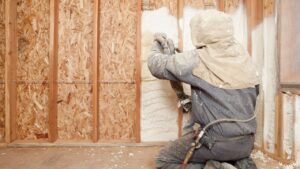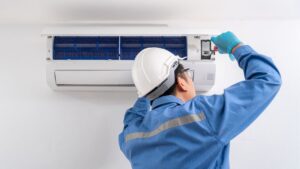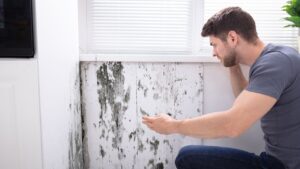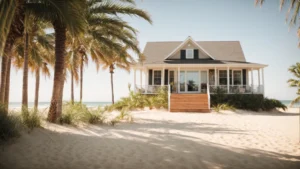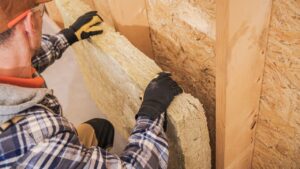Not all insulation is created equal, and no two homeowner’s insulation needs are the same. From awkward crawl spaces and places with hard to reach corners, to simply needing a replacement project done, it can be a daunting task in trying to find the best option for you. Climate, r-value, your budget, and preferences all factor into choosing the right insulation.
In an effort to make the process simpler, here are the pros and cons of some popular insulation materials, as well as what they are used best for.
Attic Insulation
Your attic is a hotspot for affecting the temperature of your home and is the first line of defense when it comes to protecting from cold drafts and heat waves. This also means that it is the first to deteriorate and need replacing, so choosing a durable insulation material is key to keeping your home energy efficient. The most ideal example is spray foam insulation.
Spray foam provides a sturdy, airtight seal that extends to gaps and corners, making it a perfect choice for attics. The best part is that this type of insulation does not degrade over time like other options, and it can be applied in an open or closed-celled fashion. Let’s take a look at the pros and cons of this material.
Pros:
- Seals off all gaps and corners that other forms of insulation can’t reach.
- Reduces heating and cooling costs by 50%.
- Durable and impermeable to water, effectively abolishing mold and mildew growth.
- Essentially lasts forever, as it does not lose its R-value over time.
- Appropriately labeled as a “top of the line airtight seal.”
Cons:
- Requires a high level of expertise for proper installation.
- Though it does not lose its r-value, it may start to shrink as it ages.
- The process is more time consuming and invasive.
- Spray foam does not meet building code requirements in some areas.
Another option for attics is loose fill fiberglass. Unlike their “batt” like counterparts, this colored fluff is applied with more flexibility to also fill in gaps and cracks. This is an ideal choice for homeowners looking for a more accessible and cost effective option. Here are the pros and cons for this material.
Pros:
- R-value can be built up without reducing the space in the attic.
- Great for filling gaps and hard to reach corners.
- Can be designed to be fire, mold, and pest resistant.
- Not as expensive as other options.
Cons:
- Installation is a messy process.
- Decreases in R-value over time.
- Often requires additional factors such as installing a vapor barrier, venting, and air seals.
- Must be installed by a professional.
Sub-Floor Insulation
Also known as underfloor or a crawl space, sub-floor insulation keeps temperatures regulated inside your home by preventing hot or cold air from escaping to the ground and vice versa. Just like you need insulation in your attic and throughout the rest of your home, sub-floor could be the missing puzzle piece to a more energy efficient home.
When it comes to which type of insulation you should choose for your crawl space, the most popular is fiberglass batts or rolls. Let’s take a look at the pros and cons of this material.
Pros:
- Can last for up to 50+ years.
- Treated with fire retardant chemicals.
- Most cost effective option.
- Relatively easy installation due to being precut.
- Can be made with recycled materials.
- Double as sound proofing.
Cons:
- Poses some hefty health risks including eye and sinus irritation due to dust particles.
- Does not provide a 100% seal and the R-value degrades over time.
- Must be installed by a professional to ensure proper sealant and ventilation techniques.
Blown-in Insulation
Blown-in insulation is the process of using a machine to apply insulation rather than installing using man power. This is due to the material not being compact, but instead is loosely blown into the wall cavity. There are two types of blown-in insulation: loose fill fiberglass and cellulose. Since we’ve already discussed fiberglass, let’s take a look at what cellulose has to offer.
Cellulose is the most eco-friendly option as it uses shredded newspaper to be blown into the walls of your home. Here are the pros and cons of this material.
Pros:
- More airtight than fiberglass.
- Contributes to the environment by cutting down on waste and reusing materials.
- Easy installation in that there is no need for cutting and measuring.
- It has a high R-value.
- It is one of the more affordable options.
- Can be treated to be fire, pest, and mold resistant.
Cons:
- Though it contains Boron, an insect repellant, there is a limited supply of the material.
- It is not the cleanest process when installing and removing.
- Its fire retardant properties lose strength over time, making it highly combustible.
- It’s better for the environment, but not much better for your health when compared to fiberglass.
Next Steps
Now that you have an idea of what you can expect with the most popular types of insulation and what they are best for in your home, the next step is to consult a professional to get the work done. Let us kick off your insulation journey by introducing your first company to consider for the job!
Universal Insulation Doctor is an A+ BBB accredited insulation company based in Virginia Beach, VA. They also have other locations in VA and surrounding areas that include Chesapeake, Norfolk, Portsmouth, Newport News, and Hampton.
Offering more than insulation removal and installation, they also offer sanitization/disinfection treatments, air duct cleaning, even attic and sub-floor insulation! To further simplify things, the company has a three-step insulation installation process listed on their website to show customers what they can expect.
Last but certainly not least, Universal offers flexible payment options through Smartpay. Options include 90 day same as cash, 6 months interest free, and up to 24 monthly payments with “0” down! Ultimately, you will not know any accurate price for your specific project unless you receive a free, in-home inspection. Set one up today!

